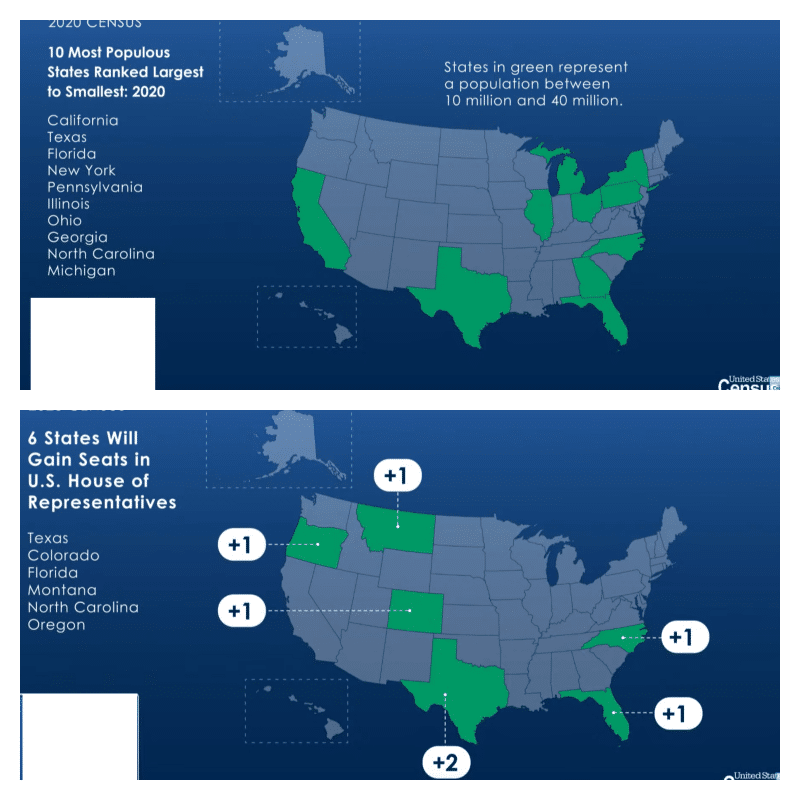
Last Updated on April 26, 2021 5:38 pm
The first data from the 2020 Census was released on Monday afternoon by the U.S. Census Bureau.
The 2020 Census shows the resident population of the United States on April 1, 2020, was 331,449,281. The U.S. resident population represents the total number of people living in the 50 states and the District of Columbia. The resident population increased by 22,703,743 or 7.4% from 308,745,538 in 2010.
North Carolina's total apportionment population was 10,453,948 as of April 1, 2020. North Carolina's resident population was 10,439,388 and the overseas population from the state was 14,560.
North Carolina joins four other states to gain one seat in the House of Representatives. The other states are Colorado, Florida, Montana, and Oregon. Texas will gain two seats.
Seven states will lose one seat each. They are California, Illinois, Michigan, New York, Ohio, Pennsylvania, and West Virginia. The remaining states number of seats will not change.
Other data from the report:
- The most populous state was California (39,538,223); the least populous was Wyoming (576,851).
- The state that gained the most numerically since the 2010 Census was Texas (up 3,999,944 to 29,145,505).
- The fastest-growing state since the 2010 Census was Utah (up 18.4% to 3,271,616).
- Puerto Rico's resident population was 3,285,874, down 11.8% from 3,725,789 in the 2010 Census.
In accordance with Title 2 of the U.S. Code, a congressionally defined formula is applied to the apportionment population to distribute the 435 seats in the U.S. House of Representatives among the states.
The apportionment population consists of the resident population of the 50 states, plus the overseas military and federal civilian employees and their dependents living with them overseas who could be allocated to a home state. The populations of the District of Columbia and Puerto Rico are excluded from the apportionment population because they do not have voting seats in Congress. The counts of overseas federal employees (and their dependents) are used for apportionment purposes only.
After the 1790 Census, each member of the House represented about 34,000 residents. Since then, the House has more than quadrupled in size (from 105 to 435 seats), and each member will represent an average of 761,169 people based on the 2020 Census.
Redistricting data include the local area counts states need to redraw or “redistrict” legislative boundaries. Due to modifications to processing activities, COVID-19 data collections delays, and the Census Bureau’s obligation to provide high-quality data, states are expected to receive redistricting data by August 16, and the full redistricting data with toolkits for ease of use will be delivered by September 30. The Census Bureau will notify the public prior to releasing the data.
The Apportionment News Conference can be viewed below. Opening comments begin at 29:52 mark. The data release begins at the 34:23 mark.

















